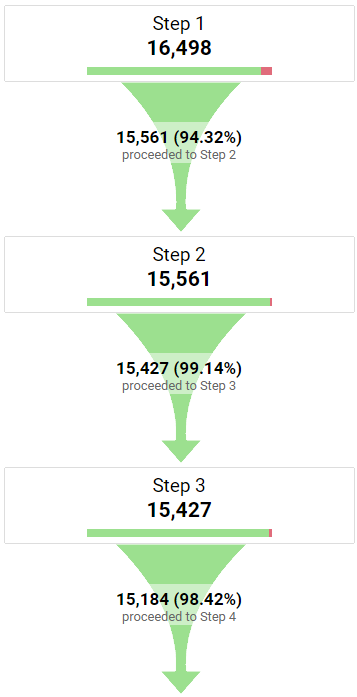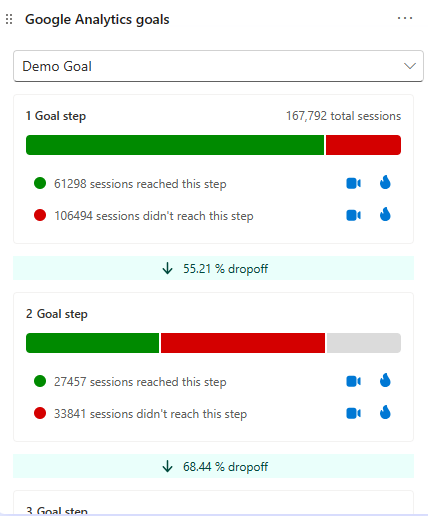Discover the Limitations of Google Analytics Goals: Revealing the Data Kind That Remain Untrackable
As businesses progressively rely upon data-driven decision-making, recognizing the restrictions of tools like Google Analytics becomes paramount. While Google Analytics Goals offer valuable insights into customer interactions, there exist information types that thwart tracking, posturing challenges to an extensive understanding of user behavior. These untrackable information kinds question about the accuracy and efficiency of the analytics information that organizations heavily trust for their digital techniques. Curious to uncover the concealed unseen areas in your information analysis process?
Insufficient Customer Journey Tracking
Incomplete individual journey monitoring within Google Analytics can hinder the ability to accurately evaluate customer actions. When the individual trip is not totally tracked, there are gaps in the information that protect against a thorough understanding of how individuals connect with a site. This lack of insight can cause missed out on possibilities for optimization and enhancements to the individual experience.
One usual concern with insufficient individual trip monitoring is the lack of ability to see the complete path that customers take in the past finishing a goal or leaving the site. Without this details, it is testing to determine where users may be experiencing obstacles or rubbing factors that stop them from converting. In addition, incomplete tracking can cover the effect of particular advertising and marketing initiatives or web site adjustments on customer habits.
To address this constraint, it is essential to establish correct tracking mechanisms within Google Analytics to capture the whole user trip. This may involve establishing event monitoring, goal funnels, or making use of tools like Google Tag Supervisor to make certain that no crucial interactions go unrecorded. By acquiring an extensive sight of the individual trip, website owners can make even more educated choices to enhance customer interaction and drive conversions.
Attribution Challenges
Browsing via attribution challenges in Google Analytics needs a comprehensive understanding of exactly how different touchpoints add to the total conversion process. Acknowledgment difficulties emerge from the intricacy of contemporary consumer journeys, where individuals communicate with numerous channels before converting. Google Analytics supplies numerous attribution versions like first touch, last touch, and straight, each offering a different viewpoint on exactly how debt is assigned to touchpoints along the conversion course. These models may not constantly accurately reflect the true impact of each touchpoint on the conversion.
One usual acknowledgment difficulty is the difficulty in associating conversions to the correct source, particularly in situations where individuals communicate with several networks before converting. This can bring about errors in determining which marketing initiatives are driving the most conversions. Furthermore, cross-device tracking poses another attribution challenge, as customers commonly switch over in between gadgets during their trip, making it testing to track their interactions seamlessly. Marketing experts have to meticulously assess and translate acknowledgment information to make enlightened decisions and enhance their advertising and marketing approaches properly.
Offline Conversions
Given the difficulties connected with associating conversions precisely in online networks, the measurement of offline conversions offers a considerable chance for marketing professionals looking for go a more extensive understanding of their customers' journey. Offline conversions describe actions that customers absorb the physical world, such as making acquisitions in brick-and-mortar shops or over the phone, attending occasions, or involving with published materials - what data is google analytics goals unable to track. These conversions are essential for organizations that run both online and offline, as they give important insights right into the effectiveness of marketing campaigns across numerous touchpoints
Tracking offline conversions typically presented a substantial challenge for marketers, as it was challenging to link these activities back to details on the internet communications accurately. With developments in modern technology, such as the assimilation of CRM systems, one-of-a-kind identifiers, and coupon codes, companies can now link the gap in between online and offline data to gain a much more all natural sight of consumer habits. By effectively measuring offline conversions, online marketers can optimize their approaches, designate resources much more find out here now effectively, and inevitably improve the general customer experience.
Cross-Device Monitoring
Cross-device tracking plays an important function in understanding the interconnected nature of customers' digital communications across multiple gadgets. In today's omnichannel world, where customers perfectly switch over between tablets, mobile phones, and desktops, tracking their behavior throughout these gadgets is vital for online marketers to get a comprehensive sight of their customer trip.

Additionally, personal privacy concerns and regulations such as GDPR and CCPA have even more complicated cross-device tracking. With individuals demanding even more control over their information and enhanced limitations on tracking technologies, marketers should find cutting-edge and privacy-compliant ways to connect customer interactions across gadgets.
Dynamic Content Engagement
Understanding individual interaction with dynamic material is essential in enhancing digital advertising techniques for improved audience interaction. Dynamic web content describes website elements that transform based upon customer actions, preferences, or other elements, supplying a tailored experience. Tracking customer interactions with dynamic content postures difficulties for standard analytics devices like Google Analytics.
While Google Analytics can track fundamental communications like clicks and page views, it may battle to catch even more nuanced involvements within vibrant web content. what data is google analytics goals unable to track. Metrics such as time invested in specific vibrant aspects, hover activities, or interactions within pop-ups are often not quickly measurable utilizing typical monitoring techniques. This constraint hinders online marketers' ability to fully comprehend just how individuals are engaging with dynamic material and tailor their approaches appropriately

Verdict
Finally, Google Analytics goals have restrictions in tracking insufficient customer trips, connecting conversions accurately, capturing offline conversions, tracking cross-device interactions, and determining dynamic material involvement. These restraints highlight the significance of checking out added monitoring approaches and devices to acquire a much more thorough understanding of customer actions and conversions beyond what Google Analytics can supply.
While Google Analytics Goals deal useful understandings into user interactions, there exist information kinds that elude tracking, posing challenges to a detailed understanding of individual habits.Incomplete individual trip tracking within Google Analytics can hinder the ability to precisely assess customer actions. When the individual trip is not totally tracked, there are spaces in the information that stop a thorough understanding of just how customers engage with a web site.One usual concern with insufficient individual journey tracking is the failure to see the full course that individuals take previously completing an objective or leaving the site. By gaining an extensive view of the user journey, web site owners can make more informed choices to enhance user involvement and drive conversions.